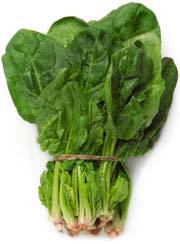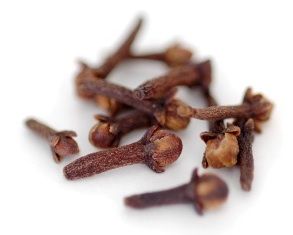The following are the words of Stephen Heuer of Synergistic Nutrition www.sgn80.com Call (888) 988-3325 and of www.oneworldwhey.com, the maker of the THE best whey protein powder EVER, from grass-fed cows, ultra-fine, ultra-pure, unheated, untreated...I can't say enough about it. At any rate, Stephen Heuer is a man I look up to for his vast knowledge in the field of health, nutrition, and natural healing, and I am reposting this from a newsletter that I recently received, as it contains a wealth of very valuable information from which we can all benefit. I hope you will check out his site and all of the top-of-the-line health products he provides:
Certain fats are crucial for optimal health and metabolism.
Find out which ones and determine if you may be deficient.
Most
people are unaware that saturated fats, including cholesterol, are
essential to health and are produced by the body. There are some fats your body cannot make and must get from its food supply. These fats are referred to as 'essential' fatty acids (EFAs). Your body needs these types of fats to survive and function properly.
There
are only two Essential Fatty Acids that the body requires from an
outside food source: Omega-3 and Omega-6. These two are particularly
responsible for controlling many cellular processes and are just as
important to our health as vitamins or minerals. However, it is vital to have a balanced ratio of these fatty acids from the right sources.
Ways Your Body Shows EFA Deficiencies
EFA deficiencies are common and can often be detected by signs on the body itself.
-
Dry skin (feet/face/general)
-
Scaly or flaky skin (legs)
-
Cracking/peeling fingertips & skin on heels
-
Lackluster skin
-
Small bumps on back of upper arms
-
Patchy dullness &/or color variation of skin
-
Irregular quilted appearance of skin
-
Thick or cracked calluses
-
Dandruff or cradle cap
-
Dry, lackluster, brittle or unruly hair
-
Soft, splitting, dull, slow-growing fingernails
-
Dry eyes
-
Dry mouth/throat
-
Inadequate vaginal lubrication
-
Menstrual cramps
-
Premenstrual breast pain/tenderness
-
Excessive ear wax
-
Excessive thirst
-
Allergies (eczema/asthma/hay fever/hives)
-
Cravings for fats/fatty foods
-
Stiff or painful joints
EFA Deficiencies Create Detrimental Health Problems
The significance of these deficiencies goes far beyond the presence of these obvious deficiency symptoms and relates to a large variety of medical conditions, including:
-
High Cholesterol
-
High Blood Pressure
-
Heart Disease
-
Diabetes
-
AD/HD
-
Eczema & Psoriasis
-
Reduced Immune Function
-
Epilepsy
-
Cognitive Decline
-
Asthma
-
Macular Degeneration
-
Glandular Atrophy (Leads to infertility and growth deficiencies)
-
Inflammatory/Auto-immune conditions (i.e. Rheumatoid Arthritis, Lupus)
-
Mental Health conditions (i.e. depression, Bipolar disorder, schizophrenia)
Whether you are trying to overcome a particular health issue or are simply trying to preserve your health, choosing a high-quality supplement with the optimal balance of fatty acids is vital.
How Essential Fatty Acids Protect Your Body & Well-Being
Improve Brain Function: (Mood, intelligence, behavior and vision) The brain is made up of over 60% fat.
EFAs play an important role in the nervous system. Omega 3 from plant
seed oils can be converted in the body to DHA (Docosahexaenoic acid).
DHA is supposed to comprise over 50% of the fat content of the brain
and is invovled in intelligence, memory and mood. Depression and other brain diseases have been associated with decreased levels of omega-3.
Strengthen Immune System: EFAs make hormone-like eicosanoids that regulate immune and inflammatory responses. Omega-3s have anti-inflammatory effects and can slow damage caused by autoimmune disorders. EFAs also have anti-fungal and anti-microbial properties, helping to protect against infections.
Lower Risk Factors for Cardiovascular Disease: EFAs lower high blood pressure levels, triglycerides, fibrinogen, clot formation tendency and inflammation.
Prevent Cancer: Dr. Otto Warberg discovered in the 1920s and 1930s that normal cells become tumor cells when oxygen levels are reduced by 35% or more. Warberg
proved that all cancer, no matter the label given, is one of the
following: an oxygen deficiency at the cellular level; or the cell has
lost the ability to absorb oxygen; or the mechanisms within the cell to
utilize oxygen have been damaged. So remember this, the primary cause
of all cancer is an oxygen deficit.
The
secondary causes of cancer can be the cells' inability to absorb
oxygen, or that the mechanisms of oxygen utilization are damaged. Guess
what determines the cells ability to absorb oxygen? Essential fatty
acids. That’s right. If the cell wall does not have plant-derived Omega
3 and Omega 6, then it can no longer absorb oxygen. Omega 3
and 6 fatty acids are the window through which oxygen can enter the
cell. When you eat a diet devoid of, or lacking in Omega 3 and 6 fatty
acids, or if you crowd out the body’s ability to benefit from Omega 3
and 6 because of the consumption of heated or chemically extracted
vegetable oils, or consume trans fats, margarine, or hydrogenated oils,
then you can crowd out the body’s ability to utilize the small amount
of good Omega 3 and 6 and end up with a deficiency at the cellular
level.
Johanna
Budwig, a famous doctor in Hungary, discovered Omega 3 rich flax oil
combined with cottage cheese could give the body the ability to restore
the cells' walls ability to absorb oxygen. In the 1950s, Budwig gave
nothing but these two foods to people with cancer and had a 90% success
rate and remission from cancer. Nowadays, I do not advocate people eat
heat-sterilized cottage cheese. Instead, I recommend our One World Whey
Protein powder, along with Omega 3 and 6 rich cold-processed vegetable
oil to insure that your body can absorb oxygen at the cellular level.
Increase Energy, Performance and Stamina: EFAs help build muscle, prevent muscle break down and speed recovery from exercise.
Regulate Body Weight: EFAs help boost mood and energy levels and suppress appetite,
which aids in the loss of excess body fat. Recent studies have shown
EFAs have the ability to block the genes that produce fat in the body.
They also increase thermogenesis.
Regulate Organs & Glands:
EFAs play a huge role in liver and kidney regulation and in the
functioning of the adrenal and thyroid glands. The production of male
and female hormones also depends on EFAs.
Support Healthy Child Development: For proper nervous system development, a growing fetus needs optimum levels of EFAs. Children can suffer from serious mental and physical health problems when mothers do not get enough EFAs during pregnancy.
Boost Bone Strength: EFAs aid in the transport of minerals that keep bones and teeth strong, helping to prevent osteoporosis.
Protect DNA & other Cells: EFAs regulate gene expression and omega-3s have been shown to inhibit tumor growth.
Produce Beautiful Skin, Hair, & Nails: Some of the first signs of EFA deficiency are dry, flaky skin, dull hair, and brittle nails. Omega-3s can help skin conditions such as eczema, psoriasis and acne.
...
Green Tea seed oil: Green tea seed oil is similar to olive oil in its nutritional makeup. It’s rich in antioxidants and has remarkable antiseptic, fungicide, bactericide and lipid-lowering effects. Green tea seed oil does not contain caffeine.
It’s rich in antioxidants and has remarkable antiseptic, fungicide, bactericide and lipid-lowering effects. Green tea seed oil does not contain caffeine.
Pomegranate seed oil: Pomegranate seed oil is an omega-5 conjugated fatty acid that is rich in punicic acid. It has antioxidant, anti-inflammatory and anti-microbial effects  and contains tocopherols, beta-sitosterol, stigmasterol and campesterol.
and contains tocopherols, beta-sitosterol, stigmasterol and campesterol.
Black cumin seed oil: Black cumin seed oil's immune-boosting antioxidant levels are among the very highest of all plant oils.
Black raspberry seed oil: Another rich source of antioxidants, black raspberry seed oil contains four different types of Vitamin E (alpha and gamma tocopherol, beta and gamma tocotrienol). 
Blueberry seed oil: Blueberry seed oil has powerful free-radical-scavenging properties.
Cranberry seed oil: Cranberry seed oil provides excellent skin and cell protection, given its extremely high gamma tocopherol content, which has the highest antioxidant capacity of all of the tocopherols.
Hemp seed oil: This is quite possibly nature's most perfectly balanced oil---Hemp seed oil is rich in Omega 3 & 6 essential fatty acids (EFAs) in an ideal 1:3 ratio. Hemp seed oil also contains a rare combination of gamma linolenic acid (GLA), oleic acid and stearidonic acids. Additionally, hemp seed oil contains antioxidants like Vitamin E, carotene and alkaline-forming chlorophyll.
 Flax seed oil: More than half the fat in flax seeds is alphalinoleni fatty acid (ALA), which is the essential Omega-3 fatty acid.
Flax seed oil: More than half the fat in flax seeds is alphalinoleni fatty acid (ALA), which is the essential Omega-3 fatty acid.
Pumpkin seed oil: Pumpkin seed oil provides Omega-6 and Omega-9 EFAs, along with powerful immune-modulating plant sterols. It aids in cholesterol regulation, prostate maintenance, bladder control, hormone balance and reproductive health.
Coconut oil: Coconut oil is a rich source of healthy medium-chain triglycerides or MCTs. It helps strengthen the immune system, protect against infections and degenerative conditions and provides a quick source of energy.
So Many Delicious Ways to Get Your EFAs!
Take one or more tablespoons of Vega Antioxidant EFA Oil Blend daily with meals for optimal benefits. Rich in omega-3 and omega-6 fatty acids, this oil can be added into smoothies or other drinks, drizzled on salad as a nutritious dressing, or taken straight from a spoon – it has a light, nutty delicious flavor. We also recommend
using it in dips, soups or adding it to your favorite vegetable, rice
or pasta dishes for an easy and delicious way to up your EFA intake.
We also recommend
using it in dips, soups or adding it to your favorite vegetable, rice
or pasta dishes for an easy and delicious way to up your EFA intake.
Vega
Antioxidant EFA Oil Blend can be used with all cold, warm and hot
foods, but should not be used for baking, frying or other
high-temperature cooking.
YOUNGEVITY also sells a variety of good-quality EFA products such as the Ultimate EFA Plus made with organically grown borage and flaxseed oil with added Vitamin E (from a natural source). www.way2health.youngevityonline.com.









 It’s rich in antioxidants and has remarkable antiseptic, fungicide, bactericide and lipid-lowering effects. Green tea seed oil does not contain caffeine.
It’s rich in antioxidants and has remarkable antiseptic, fungicide, bactericide and lipid-lowering effects. Green tea seed oil does not contain caffeine.  and contains tocopherols, beta-sitosterol, stigmasterol and campesterol.
and contains tocopherols, beta-sitosterol, stigmasterol and campesterol. 
 Flax seed oil:
Flax seed oil:  We also recommend
using it in dips, soups or adding it to your favorite vegetable, rice
or pasta dishes for an easy and delicious way to up your EFA intake.
We also recommend
using it in dips, soups or adding it to your favorite vegetable, rice
or pasta dishes for an easy and delicious way to up your EFA intake.